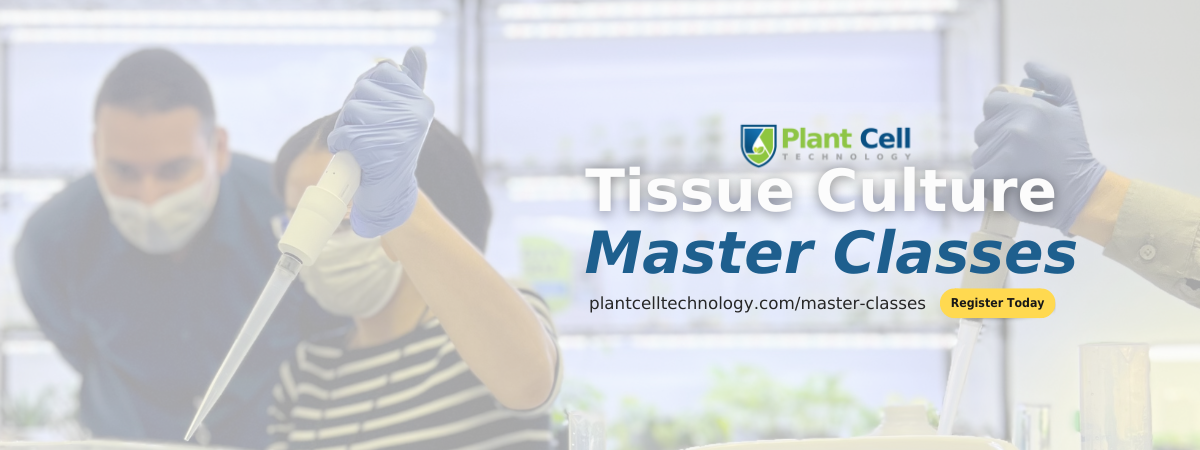Table of Contents
The cannabis industry is beginning to cotton on to the transformational cultivation techniques that tissue culture can offer. Tissue culture has been used throughout the commercial agri- and horticultural industries for several decades, and the cannabis industry is now welcoming it with open arms.
What is Tissue Culture?
Tissue culture is a transformational approach to the more conventional and traditional cultivation techniques. One of tissue culture's most attractive characteristics is that it allows growers to have almost complete control over a plant's genetics. Another attractive quality is that tissue culture requires far less space than traditional cloning, yet it can be used to propagate thousands of uniform plants, all matching in genetic lineage. This means that if you’ve found the right genetic profile that matches what you need in a plant, you can use just a small sample to propagate thousands of plants with that same genetic profile.
From just a couple of cells, a cultivator can use tissue culture and the right growing tools to propagate thousands of plants. A new branch of business has even opened within the industry; third party tissue culture companies can be hired by big businesses with large scale production. This third party is responsible for taking care of large-scale tissue culture requirements.
But tissue culture is not restricted to the laboratories; there are now DIY tissue culture kits available, and even if you only know the basics, you can definitely perform the process yourself.
But here is the question for this article: how do you store your tissue culture plants?
Whether you are a home grower, small business owner, or large-scale producer, there is one thing you need to know about tissue culture: how to store your tissue culture plants

The Process
The tissue culture process is not the simplest, but if you follow the steps correctly, it should be successful. Initially, healthy cells or sections from the plant tissue should be extracted. This excised plant tissue should be sterilized and then placed in gel or growth medium with essential nutrients, preferably Plant Preservative Mixture (PPM™) for best growth and development, before being placed inside a test tube.
During this storage period, the tissues must be retained at a cool temperature so they may go through the different growth stages. When they reach a particular stage, they need to be moved to a new gel or growth medium.
The stages detailed above are the prelude to the next phase, where the young sapling becomes the right size to be turned into new plants. And that process is repeated, all the while maintaining the gene lineage. As the young plants grow, they can be hardened off, until they are ready to be transplanted.
If you are growing your own tissue culture plants, or have purchased them, you might be wondering how to store these plants. If you want to store purchased TC plants for a short period, you could store them in the refrigerator. The cold temperature puts the plant into a state of hibernation and could last up to several weeks. However, using a cold, sterile environment is best to avoid contamination.
Temperature
When storing tissues, the temperature should remain cool and steady.
Successfully cultured tissue does not need light for long term storage, although the plants should remain in a sealed container. The sealed container is to ensure the environment remains sterile, so take care when opening the container to administer necessary additives like PPM™.
If you want to preserve genetics in your tissue, then you will have to stop the genetic change that is brought on by growth. Storing your tissue culture in low temperatures helps to inhibit growth and, therefore, genetic change. If you do have experience working with a storage facility, then you know there are strict precautions to observe if you want to avoid damage. If you are storing cultures in ultra-low temperatures, then you would need to apply cryoprotective compounds before freezing the tissues.
Freezing and Thawing
The thawing of tissues is usually done quickly, while the freezing could be either rapid or slow, depending on your preference.
Cryoinjury is one result that can come from using ultra-low temperatures, and it is believed to be the result of plasmolysis stress that comes from thawing, as well as increased intracellular solute levels and intracellular ice formation.
If your tissue has been frozen and then thawed, the condition can be assessed using viability tests. The freezing and thawing can be detrimental to the cells.
Store your tissue culture plants between 0C and 15C, ensure that the plant receives the correct nutrients and hormones, and always keep the environment as sterile as possible.
While other fields have reaped the benefits of tissue culture for decades already, the cannabis and hemp industry is just catching on. Plant tissue culture offers techniques that could aid essential causes, such as breeding cannabis with the specific gene profile needed to be effective against particular medical conditions.
Tissue Culture could be a future pillar for the medicinal marijuana field as more researchers begin to understand the gene-specifics underlying cannabis and its effect on the human body's endocannabinoid system.












Join the conversation
Your email address will not be published. Required fields are marked